
News • 'Meteorite impact in the brain'
Personalized treatment of acute stroke
When every minute counts: A Swiss team is currently developing a diagnostic procedure that can be used to start a tailored therapy for acute stroke in a timely manner.

When every minute counts: A Swiss team is currently developing a diagnostic procedure that can be used to start a tailored therapy for acute stroke in a timely manner.

Engineers at the Massachusetts Institute of Technology (MIT) have developed a telerobotic system to help surgeons quickly and remotely treat patients experiencing a stroke or aneurysm.
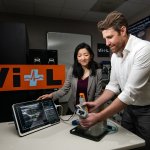
The AI-Guided Ultrasound Intervention Device is a lifesaving technology that helps a range of users deliver complex medical interventions at the point of injury.
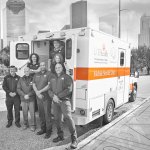
Speed in treatment of ischemic stroke can mean the difference between successful recovery versus permanent disability caused by brain tissue damage or death. Time is of the essence to perform thrombolysis with a tissue plasminogen activate (tPA), a protein that can dissolve blood clots causing the stroke or intra-arterial thrombolytic therapy (IAT) because of large-vessel occlusion.
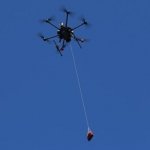
Researchers at Karolinska Institutet in Sweden can now report the results of a unique pilot project where drones were used to deliver defibrillators to real-life alerts of suspected cardiac arrest. The drones were dispatched in more than a fifth of the emergencies and arrived on target and ahead of the ambulance in most cases.
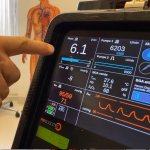
Researchers at the Medical Faculty of the University of Freiburg have developed an improved therapeutic approach to resuscitate people after cardiac arrest - often without neurological complications. Around 50,000 people suffer sudden cardiac arrest in Germany every year. When occurring outside a hospital, the chances of survival are only ten percent. Survivors often suffer from severe permanent…

Computer scientists at the University of California San Diego have developed a more accurate navigation system that will allow robots to better negotiate busy clinical environments in general and emergency departments more specifically. The researchers have also developed a dataset of open source videos to help train robotic navigation systems in the future. The team, led by Professor Laurel Riek…
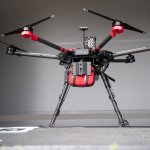
Thanks to extended permissions obtained from the Civil Aviation Authority (CAA) in Sweden, autonomous drone company Everdrone will soon provide 200,000 people in Sweden with access to emergency medical deliveries of Automated External Defibrillators (AEDs) by drone as Everdrone expands operations outside the Gothenburg region.
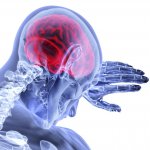
Los investigadores acaban de establecer un nuevo acrónimo en español con el objetivo de crear un mayor nivel de conciencia en la comunidad hispana acerca de los síntomas de los ataques cerebrales. Conocido como RÁPIDO, la intención de este nuevo acrónimo es replicar el equivalente popular que existe en inglés de FAST. En los estudios se ha mostrado que hoy en día los adultos hispanos…

Researchers in Oxford have developed a machine learning algorithm that could significantly improve clinicians’ ability to identify hospitalised patients whose condition is deteriorating to the extent that they need intensive care. The HAVEN system (Hospital-wide Alerting Via Electronic Noticeboard) was developed as part of a collaboration between the University of Oxford’s Institute of…

Acute stroke in children has the same incidence as brain tumours and can seriously affect a patient’s life. Two kinds of arteriopathies are common drivers of paediatric acute stroke and radiologists must learn to distinguish their signs as early as possible to improve prognosis, according to Béatrice Husson, a paediatric radiologist at Le Kremlin Bicêtre Hospital in Paris.

Low, light and with a field strength: 0.55-tesla with added new digital technologies. Indeed, this is a very new class of MRI scanner created by Siemens Healthineers. We interviewed Christiane Bernhardt, Vice President of Magnetic Resonance Marketing & Sales, Business Line MR, at Siemens Healthineers, about the technologies behind this development, plus its advantages and applications.

Large proportions of patients can be safely triaged either to rule out discharge or rule in lifesaving management – if following the European Society of Cardiology (ESC) Guidelines Class I recommendation of two serial measurements of hs-cTnI on admission and after one hour, if there are assay specific cut off values for the 0/1 algorithms. The Pathfast hs-cTNI assay is an approved system to…
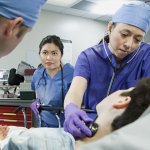
In an emergency, point-of-care-testing can provide results in minutes. However, sources of error must be understood to ensure result accuracy and confident diagnosis (particularly important during the current pandemic). Medical teams frequently use POCT devices to assess acutely ill patients; a hospital’s diagnostic laboratory is responsible for the analysers, plus training non-laboratory…
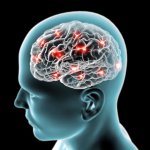
A method for detecting traumatic brain injury at the point of care has been developed by scientists at the University of Birmingham. Using chemical biomarkers released by the brain immediately after a head injury occurs, researchers are able to pinpoint when patients need urgent medical attention. This saves time in delivering vital treatment and avoids patients undergoing unnecessary tests where…

On the occasion of this year's World Sepsis Day, we spoke with Elena Sukhacheva, Ph.D., director of medical and scientific affairs at Beckman Coulter, about the status quo and outlook on sepsis diagnostics. With the severity of sepsis symptoms, it’s easy to comprehend why it is invaluable to diagnose this disease properly and in a timely manner. Dr Sukhacheva takes an in-depth look at…

Contrary to expectations, the risk of COVID-19 infection among hospital staff at the height of the coronavirus pandemic was lowest among intensive care clinicians, reveals a study of one major UK medical centre, published in the journal Thorax.

A survey of nurses caring for children with heart problems has revealed that more than half are emotionally exhausted. The analysis, presented at ESC Congress 2020, also found that good working environments were linked with less burnout.

Researchers from Eindhoven University of Technology (TU/e) and the Catharina Hospital in Eindhoven have developed a new algorithm for the rapid screening for COVID-19. The software is intended for use in Emergency Rooms (ER), to quickly exclude the presence of corona in incoming patients. As a result, doctors need to conduct fewer standard coronavirus tests, increasing efficiency. The quick scan…

Rapid first aid during cardiac arrest makes the difference between life and death. But what happens to the heart and the internal organs when people come running and begin to give well-meaning but heavy-handed heart massage as they attempt to keep the person who has suffered a cardiac arrest alive? A research collaboration between the Department of Forensic Medicine at Aarhus University and the…

Approximately one fifth of COVID-19 patients admitted to German hospitals between the end of February and mid-April died. For patients receiving ventilation, the mortality rate was 53%. For those not receiving ventilation, the rate was significantly lower at 16%. 17% of all patients were ventilated during this period. These are the main results of an analysis by WIdO, the research institute of…

CT has a critical role to play in management of mass casualty incidents with the ability to image patients from head to toe, offering a rapid overview for clinicians. The benefits of CT were outlined by Dr Elizabeth Dick during an ECR session examining the role of radiology in the management of mass casualty incidents, terror attacks and assaults.
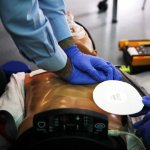
Patients and the general public appear to significantly overestimate the success of cardiopulmonary resuscitation (CPR) and underestimate the negative impact it can have on a person’s health, new research suggests. US researchers have therefore recommended clinicians discuss CPR with patients and their loved ones to clarify the practice’s success rate and the real benefits and risks involved…
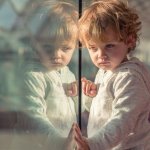
The COVID-19 pandemic has affected children with direct impacts of the infection as well as on them leading normal lives. Schooling, play and vaccinations are among issues that can affect children’s health. Delay in taking paediatric patients to the emergency room (ER) has also had a negative impact, for example late treatment of acute appendicitis. Two experts from Spain tackled these topics…
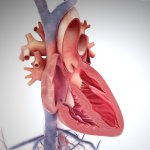
COVID-19 can cause serious cardiovascular complications including heart failure, heart attacks and blood clots that can lead to strokes, emergency medicine doctors at the University of Virgina report in a new scientific paper. They also caution that COVID-19 treatments can interact with medicines used to manage patients’ existing cardiovascular conditions.